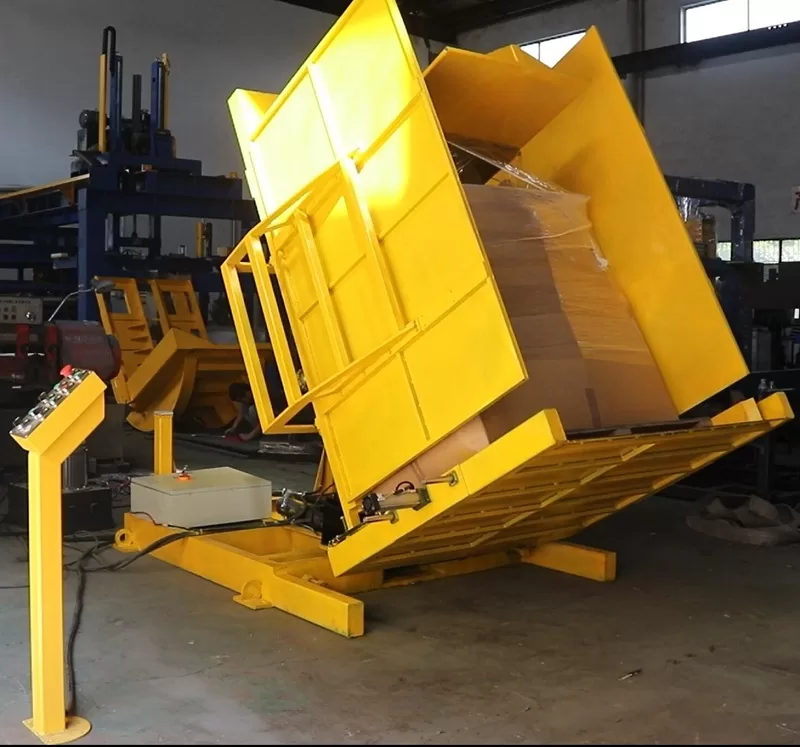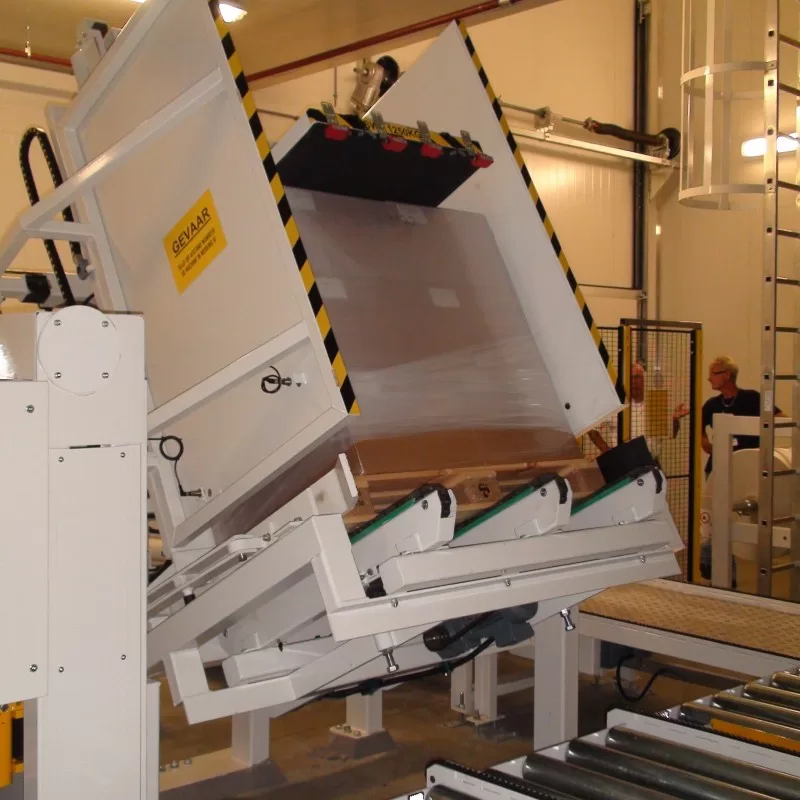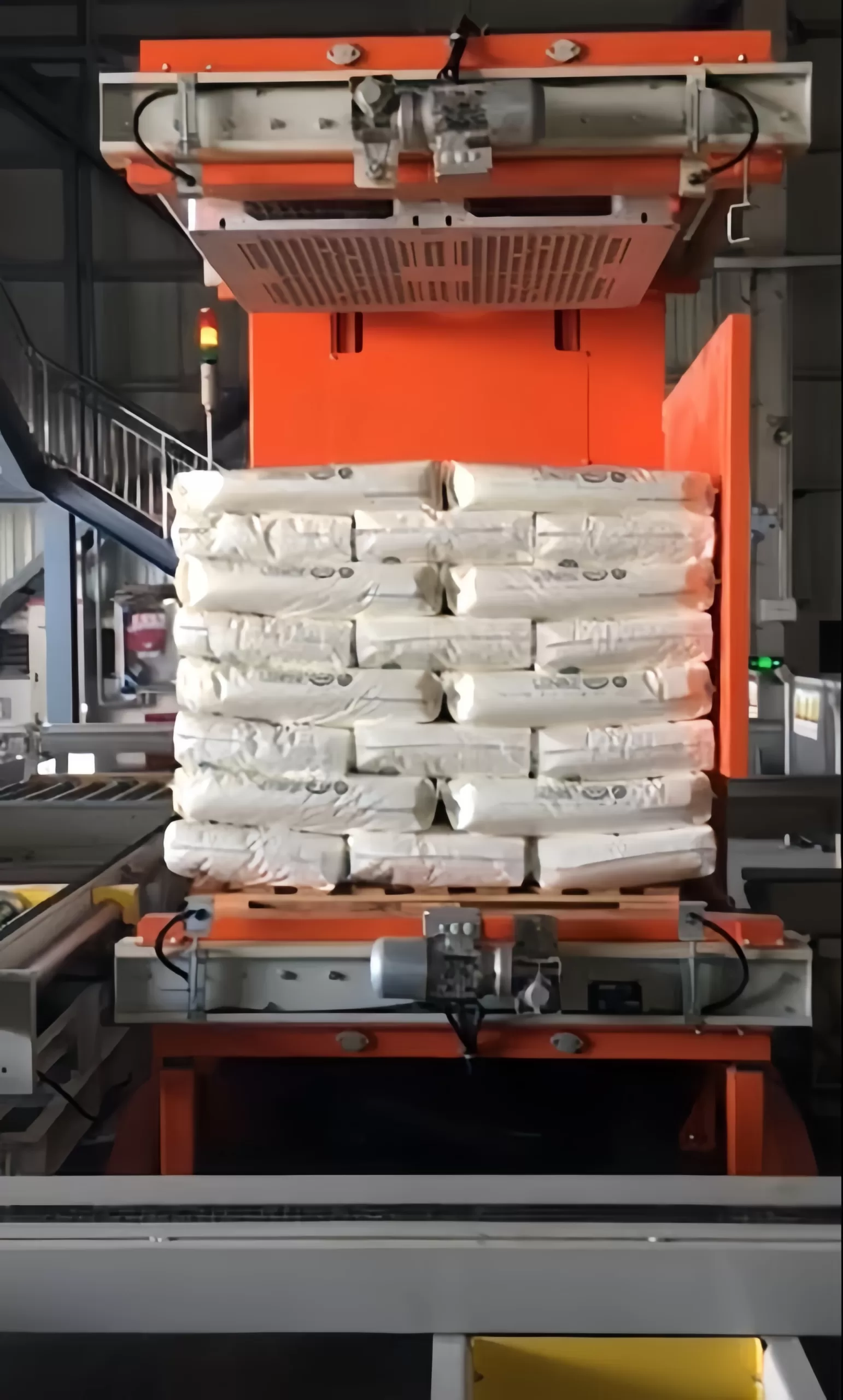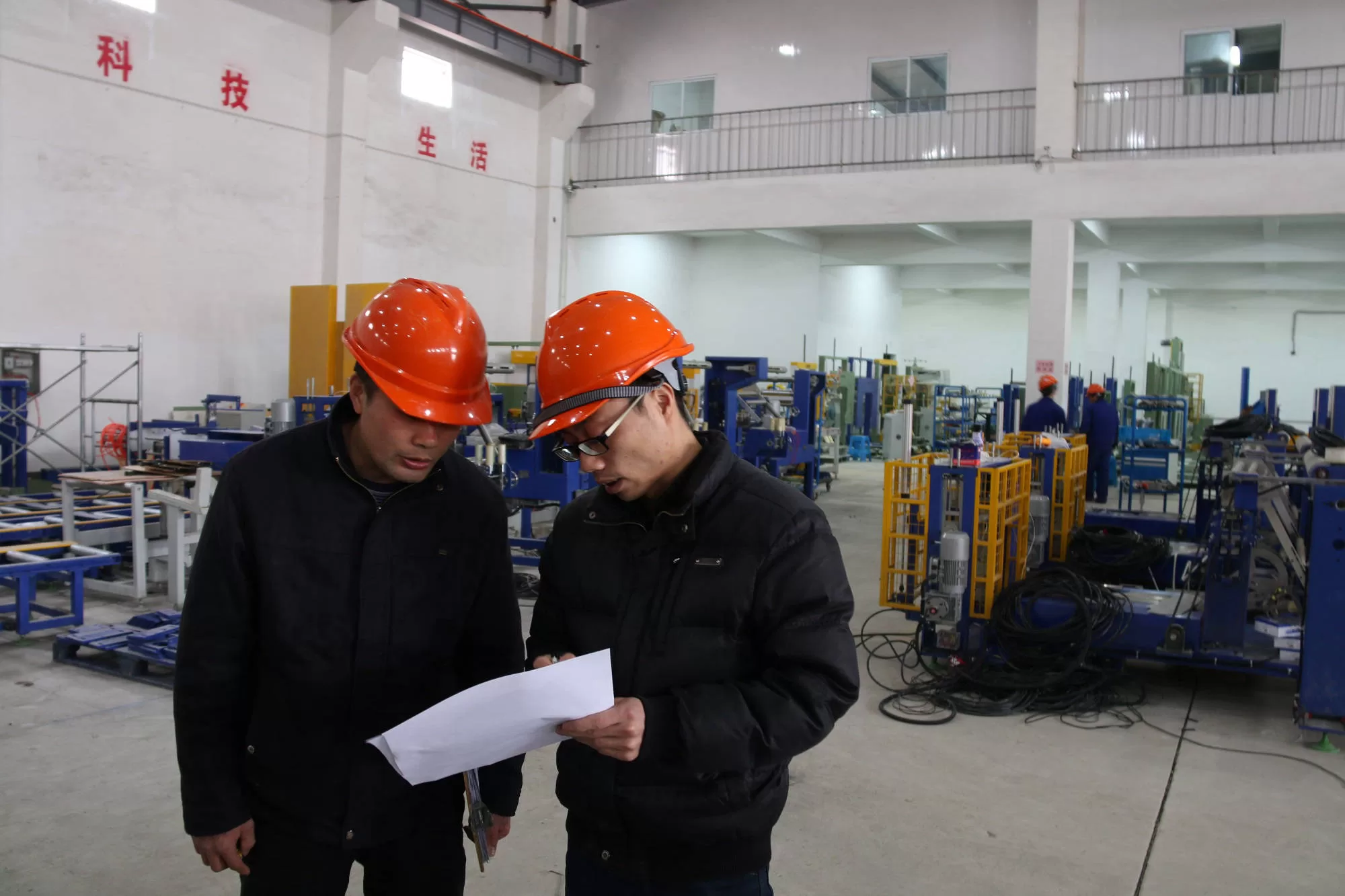Pallet Inverter Safety Features: A Comprehensive Guide for Buyers

Introduction
Pallet inverters are invaluable tools in modern material handling, streamlining operations in warehouses, distribution centers, and manufacturing plants. They allow businesses to efficiently rotate or exchange loaded pallets, often eliminating the need for manual restacking. This enhances productivity significantly, especially when dealing with damaged pallets, transferring loads between pallet types, or preparing goods for specific storage or shipping requirements.
However, the power and forces involved in handling heavy loads mean that safety cannot be overlooked. Integrating a pallet inverter, like any industrial machinery, requires a thorough understanding of its operational risks and built-in safety mechanisms. Choosing a machine without adequate safety features not only jeopardizes worker well-being but can also lead to costly equipment damage, product loss, and potential non-compliance with safety regulations.
This guide delves into the essential safety features you should evaluate before purchasing a pallet inverter. We will examine everything from emergency controls and load containment systems to guarding and compliance, helping you make an informed decision that prioritizes safety and operational efficiency.
1. Why Prioritizing Safety in Pallet Inverters is Critical
Selecting industrial equipment demands a safety-first approach, and pallet inverters are no exception. These machines manipulate substantial weight—often thousands of pounds—through complex mechanical and hydraulic actions. The inherent risks include:
- Crushing Hazards: Moving parts and clamping mechanisms can pose crushing risks if operators are not adequately protected or trained.
- Load Instability: Improperly secured or balanced loads can shift or fall during inversion, leading to potential injuries and product damage.
- Hydraulic Failures: Malfunctions in the hydraulic system could cause sudden movements or load drops.
- Operator Error: Lack of proper training can lead to misuse of the equipment, bypassing safety features, or incorrect loading procedures.
The consequences of an accident involving a pallet inverter can range from minor incidents to severe injuries or fatalities, alongside significant operational disruptions and financial losses. Therefore, understanding and verifying the presence and effectiveness of key safety features is paramount during the procurement process.
2. Emergency Stop Buttons: The First Line of Defense
Perhaps the most fundamental safety feature on any pallet inverter is the Emergency Stop (E-Stop) button. This conspicuous, easily accessible control allows anyone in the vicinity to halt all machine movement instantly in case of an emergency.
Key Considerations:
- Accessibility: E-Stop buttons should be strategically placed where operators can reach them quickly from primary operating positions and potentially other access points around the machine.
- Reliability: The E-Stop circuit must be designed to be fail-safe, meaning the machine stops if the circuit loses power or is broken.
- Visibility: E-Stops are typically large, red, mushroom-shaped buttons, making them easily identifiable.
- Reset Procedure: Restarting the machine after an E-Stop activation should require a deliberate action (e.g., twisting or pulling the button, then pressing a separate reset control) to prevent accidental restarts.
Regular testing of the E-Stop function is a critical part of routine safety checks.

3. Load Stability and Containment Systems: Preventing Spills and Shifts
Maintaining control of the load throughout the inversion cycle is crucial for safety and preventing product damage. Pallet inverters employ various systems to ensure load stability:
- Clamping Mechanisms: Hydraulic or mechanical clamps apply controlled pressure to secure the load. Look for adjustable pressure settings to accommodate different load types and weights without causing damage. Common types include:
- Top Clamps: Secure the load from above.
- Side Clamps: Apply pressure from the sides, useful for unstable or uneven loads.
- Dual Clamping Tables: Many models feature two tables that clamp the pallet top and bottom, fully enclosing the load during rotation.
- Load Centering Features: Some machines help ensure the load is correctly positioned before clamping and inversion begins.
The effectiveness of these systems depends on correct operation and ensuring loads are within the machine's specified weight and dimension limits.

4. Hydraulic System Safety Features: Guarding Against Failure
Most pallet inverters rely on hydraulic power for lifting and clamping. Failures within this system can be hazardous. Essential hydraulic safety features include:
- Pressure Relief Valves: Prevent the system from exceeding safe operating pressures, protecting components from damage and preventing catastrophic failures.
- Load-Holding Valves (Check Valves): These valves lock hydraulic fluid in the cylinders, preventing the load from dropping suddenly in case of a hose burst or power loss.
- Hose Burst Protection: High-quality hoses and fittings, along with proper routing and protection against abrasion, minimize the risk of leaks or bursts. Some systems incorporate velocity fuses that restrict flow if a hose breaks.
Regular inspection of hydraulic hoses, fittings, and fluid levels is vital for maintaining system integrity and safety.
5. Guarding and Access Control: Protecting the Operational Zone
Preventing unauthorized or unsafe access to the pallet inverter's moving parts during operation is a primary safety goal. This is typically achieved through:
- Physical Guarding: Fixed barriers or safety fencing enclose the operational area, creating a physical separation between personnel and potential hazards. This is often required by safety regulations like OSHA in the US or the Machinery Directive in Europe.
- Interlocked Gates: Access gates within the guarding system are equipped with safety interlocks. Opening a gate automatically stops the machine or prevents it from starting.
- Light Curtains or Safety Scanners: These presence-sensing devices create an invisible barrier. If the beam is broken by a person entering the hazardous zone, the machine automatically stops.
- Safety Mats: Pressure-sensitive mats placed around the machine can detect if someone steps into a restricted area and trigger a machine stop.
The choice of guarding depends on the machine's design, the surrounding workspace, and a risk assessment.
6. Anti-Slip Surfaces: Ensuring Secure Footing

These surfaces, often made from textured steel plate or specialized coatings, reduce the risk of slips and falls, particularly in environments where floors might become wet or oily. This is crucial for tasks requiring careful positioning or interaction near the equipment.
7. Secure Locking Mechanisms During Rotation
During the inversion process, the clamping tables or platforms holding the load must remain securely locked relative to the rotating mechanism. Robust locking systems, whether mechanical or hydraulic, prevent any unintended movement or slippage of the load-holding structure during rotation.
These mechanisms ensure that the load remains contained and stable throughout the entire 180-degree (or other specified) rotation, minimizing the risk of the load shifting unexpectedly or becoming dislodged, which could cause damage or injury.
8. Comprehensive Operator Training and Safety Protocols
Even the most advanced pallet inverter safety features are only effective if personnel are properly trained. Comprehensive training should cover:
- Correct Operating Procedures: Loading, clamping, inversion, unloading.
- Understanding Machine Controls: Including the E-Stop and reset procedures.
- Safety Feature Awareness: How guards, interlocks, sensors, and alarms function.
- Pre-Operational Checks: Daily inspections of safety features and machine condition.
- Emergency Procedures: What to do in case of malfunction or accident.
- Load Handling: Understanding weight limits, load stability, and proper pallet condition.
- Lockout/Tagout (LOTO) Procedures: Essential for maintenance and servicing tasks.
Manufacturers usually provide operating manuals and may offer training sessions. Regular refresher training and documented safety protocols specific to your workplace are crucial for ongoing safety.
9. Verification of Compliance with Safety Standards
Before purchasing, verify that the pallet inverter meets relevant national and international safety standards. Key indicators include:
- CE Marking (Europe): Indicates compliance with EU health, safety, and environmental protection standards outlined in directives like the Machinery Directive 2006/42/EC.
- OSHA Compliance (USA): While OSHA doesn't certify equipment, machines should be designed and guarded in accordance with OSHA regulations (e.g., 29 CFR 1910 Subpart O for machinery and machine guarding). Compliance with consensus standards like ANSI/ITSDF B56 (for industrial trucks, if applicable) or specific ANSI/RIA standards (for robotic integration) may also be relevant.
- Other National Standards: Depending on the country of use (e.g., CSA in Canada, AS in Australia).
Request documentation from the manufacturer confirming compliance. It is the buyer's responsibility to ensure equipment meets local legal requirements. Reputable manufacturers will readily provide this information. Consider referencing resources like the OSHA website or the EU's Machinery Directive guidance for more details.
10. Routine Maintenance: Ensuring Long-Term Safety Reliability
Safety features require regular inspection and maintenance to remain effective. A robust preventive maintenance program is essential for the long-term safe operation of your pallet inverter. Key maintenance tasks include:
- Inspecting Guarding: Checking fences, gates, interlocks, and presence-sensing devices.
- Testing E-Stops: Verifying correct function regularly.
- Checking Hydraulic Systems: Inspecting hoses, fittings, cylinders for leaks, wear, or damage; checking fluid levels.
- Inspecting Mechanical Components: Checking clamps, rotating mechanisms, bearings, and structural integrity.
- Lubrication: Following the manufacturer's lubrication schedule.
- Electrical Checks: Inspecting wiring, sensors, and control panels.
Adhering to the manufacturer's recommended maintenance schedule, using qualified technicians, and keeping detailed maintenance logs are crucial for ensuring safety features function correctly throughout the machine's lifespan.
11. Weight Capacity Monitoring: Preventing Dangerous Overloads
Exceeding the pallet inverter's rated load capacity is extremely dangerous, potentially leading to structural failure, load collapse, or hydraulic system damage. Advanced pallet inverters incorporate weight capacity monitoring systems:
- Load Cells: Integrated sensors (load cells) measure the actual weight of the palletized load before or during the clamping process.
- Operator Alerts: If the detected weight exceeds the preset maximum capacity, the system alerts the operator via visual or audible signals.
- Operational Interlocks: Some systems prevent the machine from initiating the inversion cycle if an overload condition is detected.
Ensuring accurate calibration of these sensors is part of routine maintenance. Always clearly label the machine's maximum load capacity and train operators never to exceed it.
12. Audible and Visual Warning Alarms: Enhancing Situational Awareness
In busy or noisy industrial environments, audible and visual alarms play a vital role in alerting personnel to the pallet inverter's operational status. These typically include:
- Flashing Beacons: Signal when the machine is powered on or in motion.
- Audible Sirens or Beepers: Sound before or during movement cycles.
These alarms enhance situational awareness, warning nearby workers who might not be directly observing the machine, thereby reducing the risk of collisions or accidental entry into the operating zone. The integration of these alarms should ensure they are noticeable without being excessively disruptive.

Conclusion: Investing in Safety for Long-Term Success
Choosing a pallet inverter requires careful consideration of its operational capabilities and, critically, its safety features. Modern machines offer a sophisticated array of protections, from robust emergency stops and secure load clamping to advanced guarding and overload prevention systems.
Investing in a pallet inverter equipped with comprehensive safety features is not merely about compliance; it's about protecting your workforce, safeguarding your products, minimizing downtime, and ensuring smooth, efficient operations. By prioritizing the safety mechanisms discussed in this guide—alongside rigorous operator training and diligent maintenance—you can confidently integrate a pallet inverter into your workflow, enhancing productivity while maintaining a safe working environment. Always conduct a thorough risk assessment specific to your application and consult with reputable manufacturers to select the machine best suited to your safety and operational needs.

Get Your Best Solution !